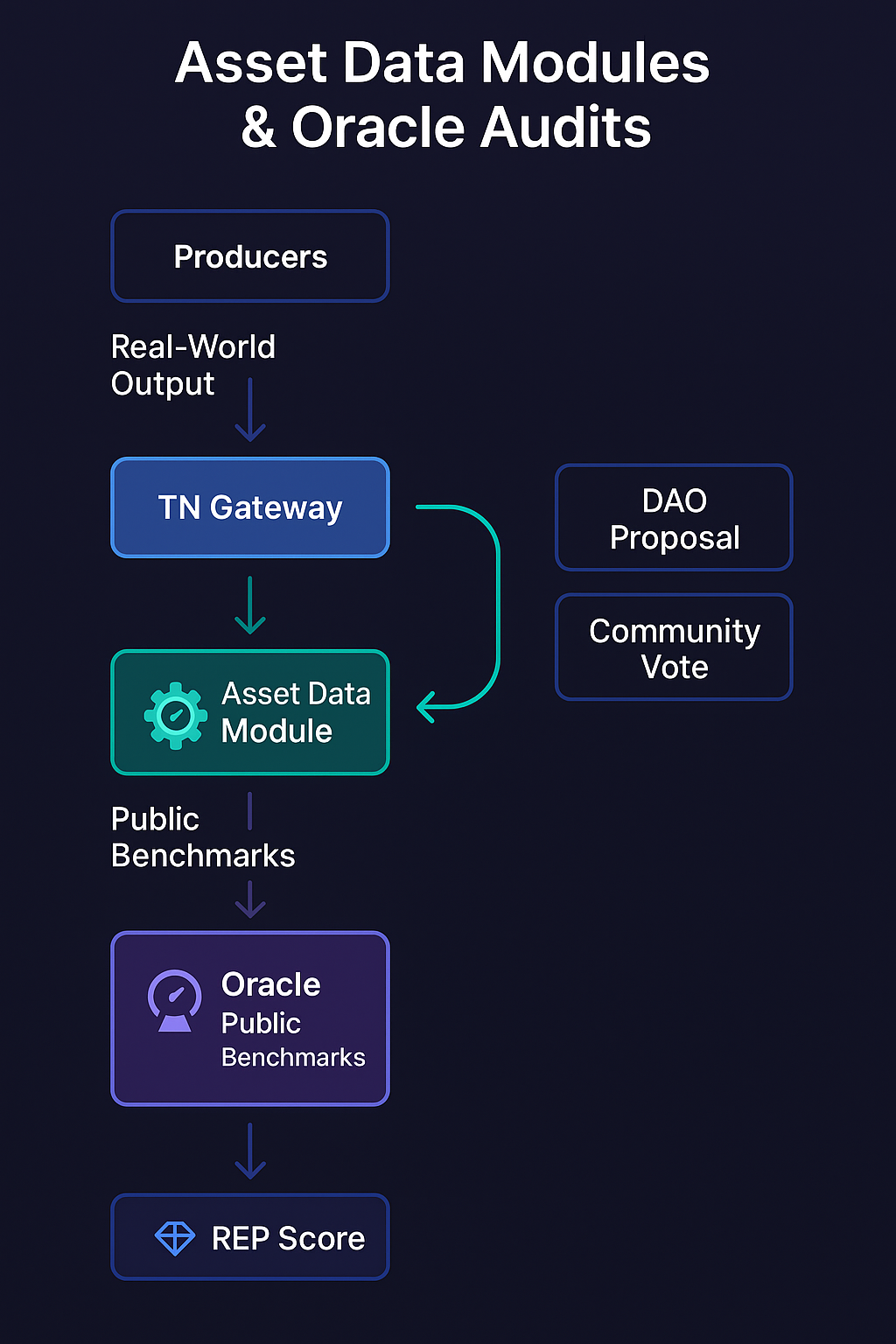Step 3: Verify Output with Asset Modules + Oracles

Treasurenet uses modular validation logic to accurately assess real-world productivity. Different asset classes require different verification methods—so the protocol relies on specialized Asset Data Modules, paired with Oracle-based audits, to ensure integrity at scale.
How It Works:
- Producers submit output through the TN Gateway
- Asset Modules process the data based on asset-specific logic
- Oracles pull public benchmarks to cross-verify claims
- If verified → REP Score is minted as a reward
What Are Asset Data Modules?
- Custom-built validators for specific industries
- Apply unique rules for calculating output value and confirming authenticity
Examples:
- Oil: Calculates value per barrel based on production logs and market prices
- Gas (Natural Gas): Verifies flow rates, energy content, and timestamp accuracy via sensors
Each module knows how to interpret the data specific to its domain—ensuring that productivity is never generalized or misvalued.
Role of Oracles:
- Pull real-time price data or benchmarks
- Cross-reference with third-party records (e.g. EIA, chain logs, open datasets)
- Feed back into the smart contract to finalize REP issuance
All Oracle sources are whitelisted via DAO governance, ensuring transparency and auditability.
Governance-Driven Expansion:
- As Treasurenet scales, new asset modules can be proposed and approved by the community
- Supports new industries (e.g. solar, compute, bandwidth)
- Adapts to evolving data sources, standards, and compliance needs
- Each module undergoes on-chain review, testing, and DAO ratification
This trustless pipeline ensures that every unit of REP is backed by validated, tamper-resistant data.